Case Studies.
Add Case Study
Our Case Study database tracks 22,657 case studies in the global enterprise technology ecosystem.
Filters allow you to explore case studies quickly and efficiently.
Download Excel
Filters
-
(6,653)
- (2,601)
- (2,127)
- (945)
- View all
-
(5,642)
- (2,469)
- (1,692)
- (826)
- View all
-
(5,571)
- (2,178)
- (1,766)
- (643)
- View all
-
(5,247)
- (2,179)
- (1,715)
- (1,321)
- View all
-
(2,881)
- (1,448)
- (574)
- (376)
- View all
- View all 15 Technologies
- (1,985)
- (1,985)
- (1,915)
- (1,679)
- (1,629)
- View all 42 Industries
- (8,728)
- (4,742)
- (3,618)
- (3,233)
- (2,947)
- View all 13 Functional Areas
- (3,304)
- (2,787)
- (2,603)
- (2,006)
- (1,630)
- View all 129 Use Cases
- (13,581)
- (5,296)
- (4,272)
- (3,520)
- (2,856)
- View all 9 Services
- (504)
- (432)
- (416)
- (382)
- (301)
- View all 1083 Suppliers
Selected Filters
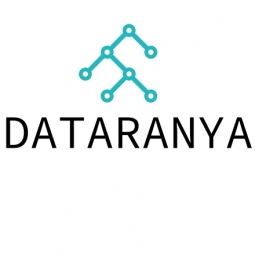
|
Energy monitoring and management
Steel fabrication plant processing 160MT to 200MT of steel per month.Plant wants to reduce spend on electricity. Evaluated solar panels, but project dropped due to ROI period.Plant has APFCRs to maintain a high Power Factor.
|
|
|
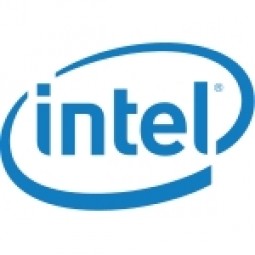
|
Higher Ambient Data Center Temperatures Reduce Costs
As a pioneering IT enabler and technology driver, Intel’s objective was to demonstrate to clients that the modern data center operating environment does not require the level of cooling traditionally thought necessary to guarantee reliable performance. Given the significant energy cost and capital expense associated with cooling technology, there would be considerable potential for dramatically reducing TCO by designing and building data center facilities that run at a higher ambient temperature.Demonstrating the validity of this approach required an accurate and straightforward way to scientifically prove how TCO could be reduced without business risk or compromising IT performance. Intel needed a dependable solution that would rapidly allow a detailed assessment of the entire data center environment under varying workloads and conditions, holistically and at an individual component level.
|
|
|
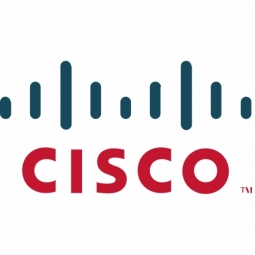
|
Achieving Reliability and Service Quality Using the Cisco Unified Communications
To address the challenges of proactively monitoring the very large Cisco Unified Communications global network and to achieve reliability and service quality goals, Cisco IT turned to the Cisco Unified Communications Management Suite. The Cisco® internal Unified Communications network is a very large global deployment, having more than 85,000 IP phones spread over six continents.Being in new and uncharted territory in the initial stages, the Cisco IT team first had the challenge of defining methodologies and metrics for measuring and monitoring the key components of service quality: Availability (Can I pick up the phone and get dial tone? Does my call connect? Can I leave and retrieve voicemail?)Performance (How is the voice quality? Did I get disconnected mid-call? How does the voicemail sound? How fast is the voicemail prompt?)The team also had the additional challenge of figuring out approaches, techniques, and tests to:Detect configuration issuesReduce recovery time in the event of a service failure
|
|
|
_30.jpg)
|
Waterford Township Improves Maintenance Consistency and Efficiency
Waterford Township has been faced with losing a significant number of DPW staff, some with more than three decades of water and wastewater knowledge, to retirement. The company began to search for a solution that would like real-time operational data from its SCADA systems to its CMMS and DMS to create standard operating procedures and work orders automatically when conditions were met in defined workflow procedures. One key aspect of the project was to get operating procedures standardized and in a format where staff in the field, who might not be familiar with the system, could follow the necessary steps to correct the issue.
|
|
|
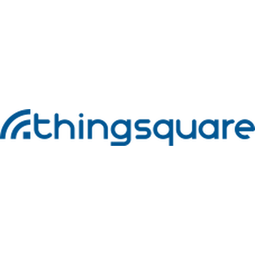
|
ThingsSquare | Creating A Way to Measure The Power Consumption of Low Hardware
The traditional way to measure power consumption of a device is to connect multimeters, oscilloscopes, or specialized power analyzers to the hardware that is to be tested. These tools are slow, difficult to set up, and make it difficult to measure the power consumption for more than a few seconds. Also, they typically require a fair amount of experience with electronics and electrical engineering.
|
|
|
_30.jpg)
|
Dubai Aerospace Enterprise Enhances Efficiency with GE Digital’s Asset Transfer System
Dubai Aerospace Enterprise (DAE) was faced with the challenge of managing over 2 million records related to its $16B USD fleet of 425 advanced Boeing, ATR, and Airbus aircraft leased to more than 108 operators in 52 countries. The sheer volume of maintenance documentation, compliance, inspection audits, and lease transfers with airline customers was overwhelming. The data was siloed across multiple systems or locations, creating bottlenecks and inefficiencies, which impacted the delivery of information to customers. DAE had digitized part of its information, but the platform was outdated and discontinued in terms of future development and support. This meant more time and effort required to respond to customers with accurate information. Additionally, the security of hundreds of thousands of paper records was at risk in the event of a disaster such as a flood or fire.
|
|
|

|
OPNET and Ixia Solution Improves Network Application with Network Visibility
Networked applications, such as electronic medical record (EMR) or electronic health record (EHR), are vital for Cook Children’s to provide outstanding service to its patients and physicians. As its network grew in complexity, with data coming in from various wireless medical devices and wearables, as well as remote hosted applications, issues surfaced. The organization’s network manager identified a range of issues that included slow user experience, network monitoring challenges, and an inability to proactively identify application performance concerns.
|
|
|
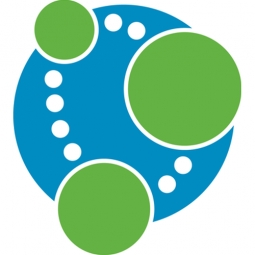
|
Leveraging Graph Technology for Enhanced Cybersecurity: A Case Study on MITRE's CyGraph
MITRE, a federally-funded, not-for-profit company that manages seven national research and development laboratories in the United States, was grappling with the challenge of managing an influx of cybersecurity data. The constant changes in network environments were impacting the security posture of U.S. government agencies. Intrusion alerts, anti-virus warnings, and seemingly benign events like logins, service connections, and file share access were all potentially associated with adversary activity. The cybersecurity researchers at MITRE needed to go beyond rudimentary assessments of security posture and attack response. This required merging isolated data into higher-level knowledge of network-wide attack vulnerabilities and mission readiness. The challenge was not the lack of information, but the ability to assemble disparate pieces of information into an overall analytic picture for situational awareness, optimal courses of action, and maintaining mission readiness. The team also struggled with fully comprehending a given security environment and mapping all known vulnerabilities.
|
|
|
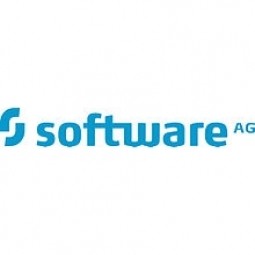
|
Scalable IoT Empowering GreenFlex's Sustainable Growth
GreenFlex, a company that supports sustainable development, decarbonization, and energy efficiency, faced several challenges in its quest to expand its business. The company needed to deploy a robust and sustainable IoT technology to support its growth. It was crucial for them to monitor and control devices at customer sites in a safe and reliable manner. They also needed to integrate devices across a range of communication protocols and gather and act on data to meet efficiency targets. GreenFlex had previously built IoT capabilities into its digital platform, GreenFlexIQ, to monitor and manage customer sites remotely. However, they soon realized that they needed a new platform to support their ambitions. They needed a platform that could scale to connect more devices for production management and make it easier for the operations team to manage devices in the field.
|
|
|
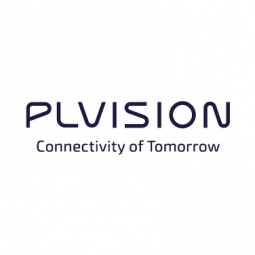
|
PLVision - Facility Wireless Network with Transparent Access Control and BYOD Support |
|
|
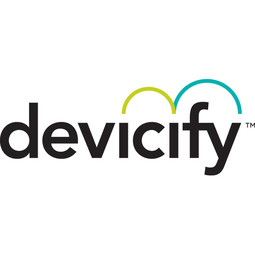
|
Creating Value for EOC1
EOC1 aimed to expand their services and offerings while remaining competitive. However, EOC1 was a service company with little expertise with products, device communications or platform technologies.
|
|
|
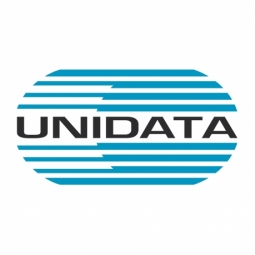
|
Smart Harbor @ Porto Turistico di Roma by Unidata
The Porto Turistico di Roma wanted to address two main pain points:1) manual meters reading activity too long and too expensive2) time for billings to customer customers' too long
|
|
|

|
TOBYHANNA ARMY DEPOT DEPLOYS WIN-911 SOFTWARE WITH TRIDIUM’S NIAGARA PLATFORM
The installation of WIN-911’s alarm notification software at the Tobyhanna Army Depot was done as part of an overall energy efficiency project. In the early 2000s, the base worked to decentralize their coal-fired steam heating plant. This project included the construction of 10 boiler rooms housing 21 new boilers, as well as 37 air rotation units installed in various buildings. The entire infrastructure had to be integrated into HMI/SCADA systems and the existing control systems had to be upgraded. Ameresco, a leading independent energy efficiency company, was selected to head the project. Ameresco, in turn, specified WIN-911’s alarm notification system as the software platform used to instantly alert staff of any problems.
|
|
|
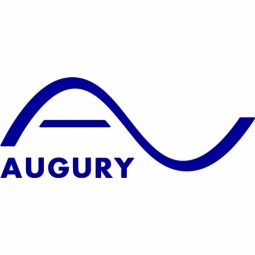
|
AI-driven Machine Health Drives Actionable Insights at CPG's North American HQ
Sodexo, the leader in facilities management, is helping manage the operations of the North American headquarters of one of the world’s largest CPG companies. Both the client and Sodexo were looking to transform their respective workplace and modernize workflows. Sodexo was accustomed to practicing route-based maintenance but the lack of insights in the machines they managed hindered them from better understanding the true health of those machines. It wasn’t just about cost saving, it was about leveraging technology to transform how they worked. Sodexo needed a partner that could digitally transform their program, provide continuous insights into the health of their machines, all while bringing them into the new world of Industrial IoT. How could the team optimize asset performance? How could they increase productivity while extending the life of equipment? How could they leverage decades of hands-on experience with technology to accomplish more?
|
|
|
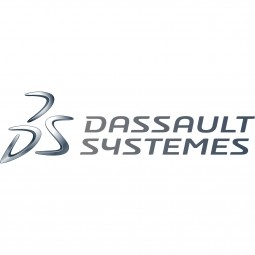
|
Flow Robotics: Scaling Up Production and Accelerating Product Development with IoT
Flow Robotics, a Danish manufacturer, developed flowbot™ ONE pipetting robots to alleviate the strain on bioanalysts in life-science laboratories and hospitals across Europe. These robots were designed to automate part of the testing process, speeding up the time it takes to produce results and reducing pressure on staff. However, the company faced challenges in scaling up production and accelerating product development. High workloads and physically challenging conditions have long been an issue for laboratory professionals. Flow Robotics estimates that around half of medical lab technicians carry out the same arm movements for at least a quarter of their working day. The American Society for Clinical Pathology reported that 85% of laboratory professionals feel burnt out; 36% struggle with inadequate staffing; and 32% face a heavy workload and pressure to complete all testing on time.
|
|
|
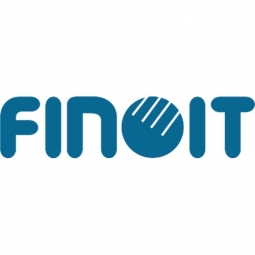
|
Delhi NCR Metro: A Mobile App Revolutionizing Public Transportation
The Delhi NCR Metro, a major public transportation system in India, was facing a challenge in providing accurate and comprehensive information to its daily commuters and tourists. The lack of a centralized platform for information about metro station details, train schedules, fare details, parking, elevators, and tourist locations was causing inconvenience to the users. The challenge was to develop a mobile app that could provide all this information accurately and conveniently. The app needed to be equipped with GPS services to help users find the nearest metro and renowned locations. An interactive map was also required to assist travelers who were familiar with the metro lines. The goal was to provide maximum information with minimum input.
|
|
|
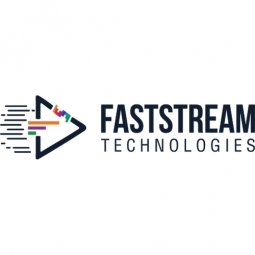
|
Electric Vehicle charging System
EV charging systems are one of the requirements for the wider adoption of EVs. Fast charging systems and their associated products and solutions are becoming an active field of development at many companies. There is also a need to put in place the charging infrastructure required for the wider use of EVs in the future. Meanwhile, issues that are still to be resolved include network management of charging units installed by various operators around the world and the construction of systems for charging unit user identification, billing, and payment.
|
|
|
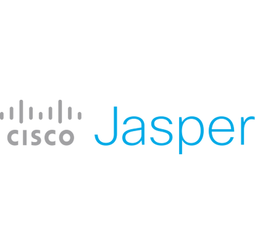
|
Cultivating an Agribusiness with Automated Efficiency
Agriculture is a difficult business and connected devices are becoming increasingly important on the farm, especially during peak times when equipment must work around the clock and achieving maximum productivity is crucial.
|
|
|

|
Telstra's Unified Communications Solution Helps MB Century Boost Productivity
As a major provider of onshore drilling services, MB Century faces special challenges in controlling operating expenses. Effective communications is of paramount importance in this regard. When employees are in the field or away from their desks, the loss of productivity associated with playing “telephone tag” can be considerable.Moreover, operating heavy equipment is inherently dangerous. At times of emergency, having reliable communications to manage urgent safety issues is essential.Aware of the productivity improvements from the introduction of TIPT two years earlier, MB Century was keen to enjoy the full benefits of Unified Communications. The company turned again to its whole-of-business telecommunications partner, Telstra, to recommend a solution.
|
|
|
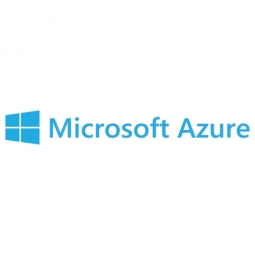
|
Microsoft Azure Cloud Migration For Idea Management Tool
High cost of hosting dedicated servers regardless of usage of the systems and resources Time required to have application provision for each new instance for end user clientsTime and resources required to manage servers, back up, and IT infrastructure in data center End user clients requiring storage of data in their own countries End user clients asking for on-demand scalability of resources on servers End user clients asking for secured certified data center with required compliances as per their IT security policy
|
|
|

|
Enhancing The Supply Chain With Intel Architecture
Support more complex business needsBoth the increasing number of customers and more complex business demand a higher-performing acquisition planning system (APS) to ensure stable and reliable operation. Improve business agilityImprove the flexibility of the APS to increase business agility. Reduce costsEnhance the APS with better performance and higher scalability at a lower cost to enable the company's future development.
|
|
|

|
Microsoft makes urban data usable via cloud technology
As one of the biggest megatrends of the 21st century, urbanization affects both recent and established industrial countries. In the European Union, already more than 70 percent of the population live in an urban area. In Germany, the uninterrupted urban growth is likely to pose huge challenges for many municipalities in the future, in areas like traffic, energy, environment and health. For this reason, innovative solutions in terms of city planning and city development are required. Additionally, increasingly demanding citizens expect a high quality of life and improved citizen services. To address those challenges, traditional routes must be tested, old infrastructures modernized and administrative processes organized more efficiently.
|
|
|

|
Integrating Systems Modeling with Simulation Helps Ensure Robust Space Debris Re
On the e.Deorbit proposal, Airbus DS engineers addressed these concerns by using system modeling to simultaneously develop the mission requirements and architectures. They developed a SySML model that integrates the safety and architecture requirements, system capabilities, functional architecture, and concept of operations (CONOPS).Developing the architectures and requirements in parallel helped to validate the requirements at an earlier stage in the project, saving considerable time and money. While this approach was a major step forward, Airbus DS engineers recognized that its benefits were limited by the fact that the domain simulations required to support the development of the architectures were each run manually and separately by engineers responsible for a particular domain.The results from these simulations were later uploaded to a database and used as input parameters for the system model and other simulations.The performance of the entire system for a particular use case is not clear until each of the simulations involved is completed which takes days or weeks. Considerable time and effort are required to simulate the performance of the entire system for even a single case, limiting the number of cases that can be run in the architecture definition phase.This creates the potential for errors and unexpected interactions that cost considerable time and money to correct when they are discovered later during the detailed design stage.
|
|
|
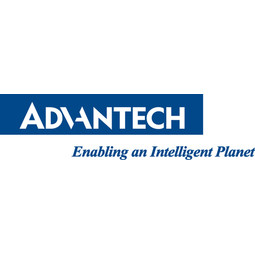
|
Edge Solutions for Smart Monitoring of HVAC Manufacturing: A Case Study on Daikin India
Daikin India, a leading HVAC solutions provider, was seeking to optimize energy efficiency and productivity at its factories. The company wanted to implement an equipment monitoring and data collection solution for its HVAC subassembly lines. However, the challenge was that these lines featured numerous programmable logic controllers (PLCs), which limited the available installation space and network capabilities. Therefore, Daikin India needed a compact yet versatile solution for acquiring and visualizing production data without high networking/infrastructure costs. The company also required a system that supports smart real-time monitoring of HVAC subassembly lines, enables seamless acquisition and visualization of equipment data, minimizes and streamlines data transmissions, offers configurable PLC I/O data collection flexibility, and provides reliable industrial-grade hardware.
|
|
|
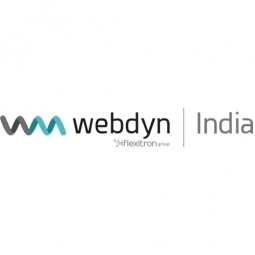
|
Conveyor Belt Monitoring
In a smart environment of management, control and industrial automation, one of the key elements to anticipate failures and increase productivity is to be able to monitor the status and use of conveyor belts of any kind of sector, whether it is for logistics or manufacturing.
|
|
|
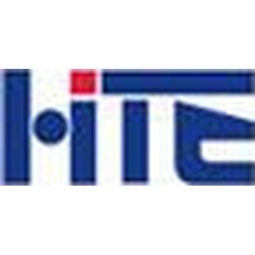
|
Guangzhou Metro Line 2 Project
Guangzhou Metro Line 2 operates mileage of 23.265 kilometers, with 20 stations and 1 depot. Metro Line 2 was built and opened from Xiaogang to San Yuanli section, and then opened from Pazhou to San Yuanli the whole line. Guangzhou Metro Line 2 is a milestone in the history of traffic construction in China, whose localization rate is over 70%. When Line 2 has opened for 1 year, it was awarded in the top ten construction science and technology achievement award hold by China Ministry of Construction, together with the Shenzhou V project.
|
|
|

|
Tray Identification at the Kennametal Drill Plant
Kennametal's high quality drill bits along with their associated aluminium trays where they are arranged go through a thorough cleaning process involving ultrasound, damp and vacuum cleaning processes after machining is performed. Before entering this washing facility, the order documents and the tray are separated and then re-allocated after cleaning. A work step that involves a risk as analyses have shown that, on occasion, trays and order documents were allocated incorrectly after cleaning. Drills went through coating processes that were supposed to be used for a different order. Hence, there was a need to eliminate mix-ups altogether.
|
|
|
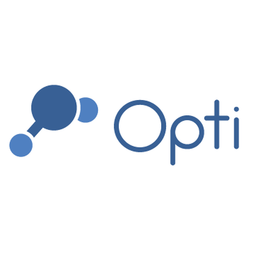
|
Green School Cistern
Denver Green School wanted an optimized rainwater harvesting system to eliminate wet-weather discharge and retain water for irrigation.
|
|
|
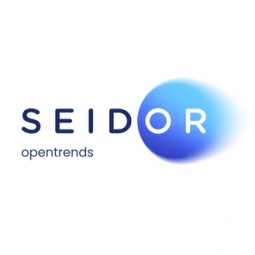
|
Beach & Water Reservoir Monitoring Platform
Catalan Water Agency is responsible for the overall management and supervision of the water reservoirs of Catalonia region. Part of its Big Data strategy was to find a monitoring system to surveil, manage and supervise in real-time the coastal areas (including swimming and non-swimming beaches), the water and its quality.
|
|
|

|
Smart Monitoring Solutions for Solar Panels: A Case Study
In 2018, the Japanese government approved the Fifth Energy Basic Plan, prioritizing renewable energy and setting it on a course to become the primary power source in Japan. This led to the re-introduction of solar panels as a renewable energy source. However, renewable energy sources such as solar power have weaker 'bearing capacity' than other power generation methods due to their characteristics. Solar power can be challenging to control because the output fluctuates based on weather conditions. If a large amount of electricity is supplied from the photovoltaic power generation sources to the grid when the power demand is low, the voltage and frequency can be disturbed, and the entire grid can become unstable. In some cases, it can lead to a large-scale power outage. This risk necessitated developments to solve problems like monitoring and controlling the amount of electricity produced by solar panels. NWC partnered with a client that generates and sells electricity serving residential, commercial, and industrial customers. The client needed to monitor the amount of electricity produced by 88,000 solar panels with a power generation capacity of 28 MW/h in a field size of 700 x 700 meters. The initial idea was a 13 kilometer wired optical network; however, the cost of over 1 billion yen made this approach expensive and impractical.
|
|




